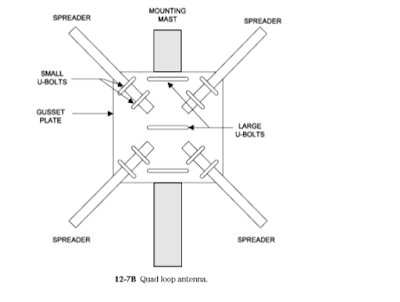Directivity and phasing
So, how does a vertical antenna owner get the benefit of directivity without the kilobuck investment that a beam or quad costs? The usual solution is to use phased verticals. AM broadcast stations, with more than one tower, are using this type of system (although for different reasons than hams). The idea is to place two or more antennas in close proximity and feed them at specific phase angles to produce a desired radiation pattern. A lot of material is available in the literature on phased vertical antenna systems, and it is far too much to be reproduced here. There are “standard patterns” dating from before World War II that are created with different spacings and different phase angles of feed current. In this chapter, we will consider only one system. Figure 11-1 shows the patterns for a pair of quarter-wavelength vertical antennas spaced a half-wavelength (180°) apart. Without getting into complex phase shifting networks, there are basically two phasings that are easily obtained: 0° (antennas in phase) and 180° (antennas out of phase with each other). When the two antennas (A and B) are fed in phase with equal currents (Fig. 111A), the radiation pattern (shown somewhat idealized here) is a bidirectional figure 8 that is directionally perpendicular to the line of centers between the two antennas; this pattern is called a broadsidepattern. A sharp null exists along the line of centers (A-B). When the antennas are fed out of phase with each other by 180° (Fig. 11-1B), the pattern rotates 90° (a quarter way around the compass) and now exhibits directivity along the line of the centers (A-B); this is the “end fire” pattern. The interference cancelling null is now perpendicular to line A-B. It should be apparent that you can select your directivity by selecting the phase angle of the feed currents in the two antennas. Figure 11-2 shows the two feeding

systems usually cited for in-phase (Fig. 11-2A) and out-of-phase (Fig. 11-2B) systems. Figure 11-2A shows the coax from the transmitter coming to a coax tee connector. From the connector to the antenna feedpoints are two lengths of coax (L1 and L2) that are equal to each other, and identical. Given the variation between coaxial cables, I suspect that it would work better if the two cables were not merely the same length (L1 = L2), but also that they came from the same roll.












